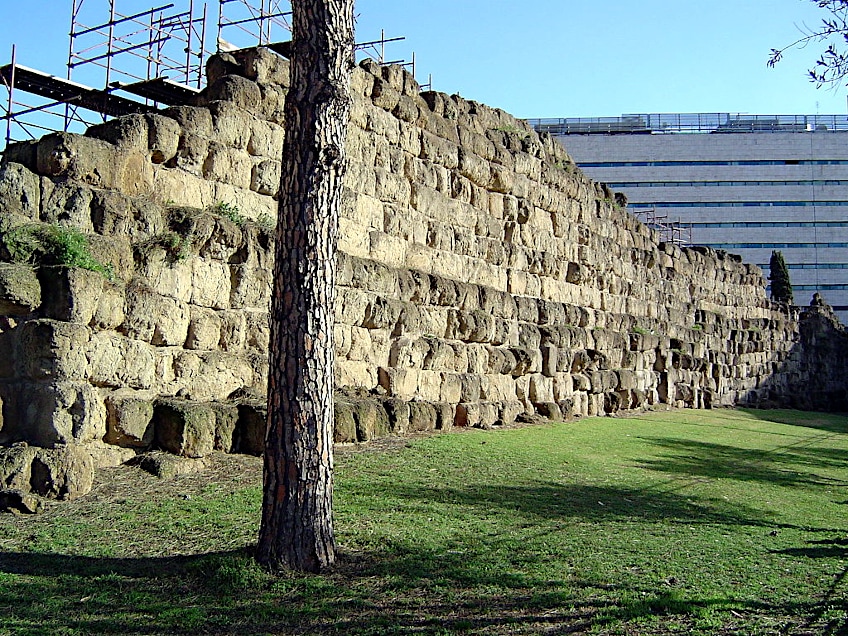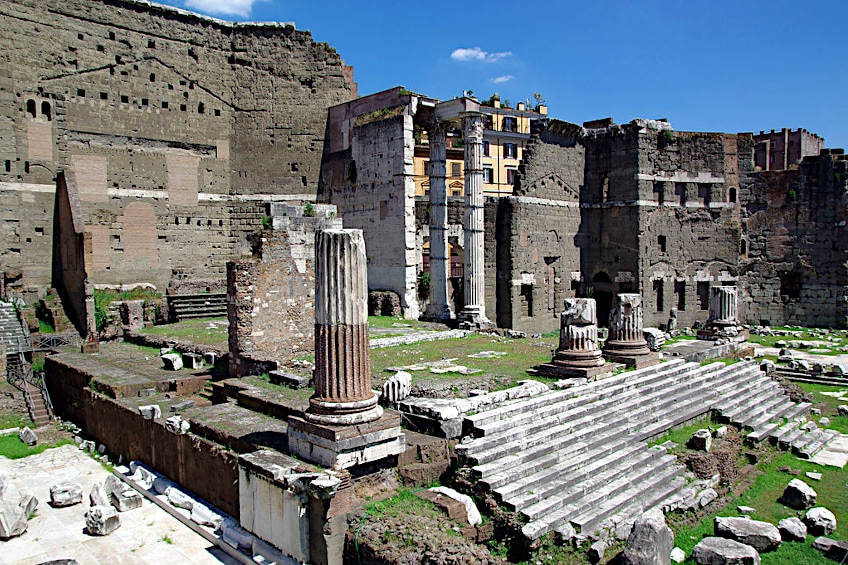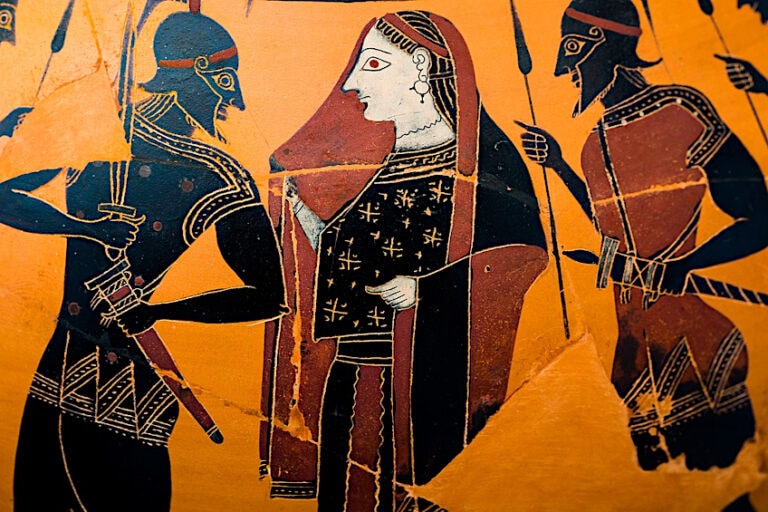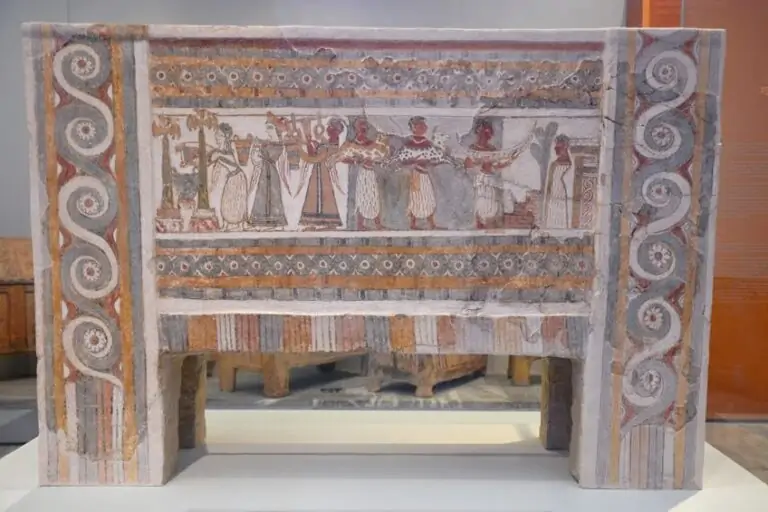How Long Did It Take to Build Rome? – Origins and Development
Many a parent has at one point or another had to impart the sage advice to their impatient children that “Rome was not built in a day”. While that might be stating the obvious, it does raise the question, “how long did it take to build Rome?”. Marvels such as the Roman aqueducts and the Roman Colosseum are notable examples of the many structures and systems that arose during this exciting period of advancement and innovation. Let’s find out more about the history of the development of Rome, and answer questions such as, “when was Rome built and why was it important?”
How Long Did It Take to Build Rome?
The origins of Rome can be traced back thousands of years, and it still continues to develop and change right to the present day. This long and continuous process can be divided into distinct eras, though. Every era was defined by a characteristic style, from the early founding days through the Roman Republic, Empire, and Renaissance eras.
 Detail of Mucius Scaevola Murders Porsenna’s Secretary by the Florentine Master (1480) showing Rome in the background; Städel Museum, PDM-owner, via Wikimedia Commons
Detail of Mucius Scaevola Murders Porsenna’s Secretary by the Florentine Master (1480) showing Rome in the background; Städel Museum, PDM-owner, via Wikimedia Commons
The Beginnings of Rome
According to Roman mythology, Romulus and Remus established Rome in 753 BCE. The brothers were the twin sons of the war god Mars and a priestess who, fearing punishment for giving birth to illegitimate children, abandoned them next to the Tiber River. They were saved by a she-wolf. Once grown, Romulus and Remus planned to establish a city where local villagers had found them suckling from the wolf.
 Detail of a Roman mosaic depicting Romulus and Remus suckled by the she-wolf (510 CE); Simone Moni / GAR, CC BY-SA 4.0, via Wikimedia Commons
Detail of a Roman mosaic depicting Romulus and Remus suckled by the she-wolf (510 CE); Simone Moni / GAR, CC BY-SA 4.0, via Wikimedia Commons
The brothers got into an argument about where exactly to establish the city. During the confrontation, Romulus murdered his brother and established Rome on his own, naming it after himself.
The historical validity of this founding myth is clearly debatable, and there are various differing viewpoints as to how Rome was established. Some academics suggest that Rome was formed by a coalition of Latin tribes that gathered on the Tiber River’s banks to build a settlement. Others say Rome was founded by Etruscans and that the Romans subsequently inherited many characteristics of Etruscan civilization. Many of the oldest structures display characteristics of the Etruscan as well as Greek influences. These structures featured arches and hydraulics, which were typical in these early societies. This period’s architecture is largely lost to time, unfortunately.
The Founding of Rome
As with the buildings, much of Rome’s early history has been lost to the passage of time. Based on the texts of ancient Roman historians, many important works of literature, as well as most of the rest of the city, were lost during the capture of Rome by the Gauls in 390 BCE. Luckily, a number of historians – all living centuries later – recorded their interpretations of that era’s oral history, offering us a foundation for understanding the Period of Kings.
According to tradition, Rome was established on the 21st of April, 753 BCE, a strangely accurate date documented by Marcus Terentius Varro, a historian from the first century.
Romulus was said to have created the laws, military, and religious and social institutions of the city-state. He is even credited with founding the first very senate. The Circus Maximus, among the largest ancient sports stadiums ever constructed, was constructed during this period. Romulus himself is said to have staged chariot races at this arena.
 Illustration depicting Romulus Founding and naming the City of Rome by Giovanni Batista Fontana (1575); Giovanni Battista Fontana, Public domain, via Wikimedia Commons
Illustration depicting Romulus Founding and naming the City of Rome by Giovanni Batista Fontana (1575); Giovanni Battista Fontana, Public domain, via Wikimedia Commons
Early Settlements
The legend of Romulus and a few succeeding kings building Rome in a lifetime have been disputed by archeologists who offer a much more mundane version of the story. Excavations in the hills surrounding Rome reveal that humans lived in the region as early as 1000 BCE. Then, gradually over time, local farmers began to move from a rural, pastoral life to one within the confines of a developing city. Little homesteads and villages on the hills surrounding the Tiber River were the initial settlements in the region that would eventually become Rome.
These settlements were most likely populated by numerous Italic tribes that had migrated to the region over time, such as the Sabines, Latins, and Etruscans.
 Replica of an Etruscan hut of the style common between the 6th and the 4th Century BCE; Rosapicci, CC BY-SA 4.0, via Wikimedia Commons
Replica of an Etruscan hut of the style common between the 6th and the 4th Century BCE; Rosapicci, CC BY-SA 4.0, via Wikimedia Commons
Archaeological evidence reveals that these early communities were primitive, with mud and straw dwellings and dirt walkways for streets. These towns were mostly populated by herders and farmers who produced crops and cattle on the rich terrain around the Tiber River. As the region’s population expanded, these little communities started coming together and establishing a more unified community. This settlement ultimately became Rome, with the city’s first walls being erected in the 4th century BCE to defend it from invasions.
As the city flourished, it became a significant center of trade and commerce, with products flowing through its marketplaces from all across the Mediterranean. The city also grew in importance as a cultural center, with Etruscan and Etruscan influences merging with local customs to form a distinctly Roman culture.
First Walls
The earliest Roman walls were erected in the fourth century BCE, during the days leading up to the Roman Republic. The walls were constructed to defend the burgeoning city against intruders, notably the Sabine tribe, with whom the Romans had repeatedly fought. The walls were around three meters thick and seven meters high, made of tufa, a form of volcanic rock common in the region.
 Surviving section of the oldest of Rome’s walls, known as the Servian wall; No machine-readable author provided. Joris assumed (based on copyright claims). , Public domain, via Wikimedia Commons
Surviving section of the oldest of Rome’s walls, known as the Servian wall; No machine-readable author provided. Joris assumed (based on copyright claims). , Public domain, via Wikimedia Commons
These fortifications were erected in an approximately round pattern around ancient Rome’s seven hills, with gates strategically placed to facilitate entrance and departure. From then, everything moved rather quickly.
Archaeologists discovered a sixth-century BCE temple dedicated to the deity Fortuna on Capitoline Hill in the center of Rome, which functioned as a trading location for merchants from all over the ancient world. According to the discoveries of these researchers, Rome was not only producing massive structures in this era, but it was also trading with distant regions like Egypt and Lebanon. This temple, along with others like it, most likely served as a neutral trade ground, helping establish Rome as the metropolis it would become, and its great walls would serve to protect it.
 Map of Rome before it became a republic; Internet Archive Book Images, No restrictions, via Wikimedia Commons
Map of Rome before it became a republic; Internet Archive Book Images, No restrictions, via Wikimedia Commons
The Roman Republic
The Roman Republic was an era in Roman history that started in 509 BCE, following the defeat of the last Roman monarch, Lucius Tarquinius Superbus, by the people of Rome. The fall of the Roman monarchy and the start of the Roman Republic were defined by this significant event. The Roman Republic was distinguished by a powerful military and an expansionist policy regarding foreign territories.
 Depiction of Lucius Tarquinius Superbus, the last king of Rome and the Cumaean Sibyl (c. 1541); kladcat, CC BY 2.0, via Wikimedia Commons
Depiction of Lucius Tarquinius Superbus, the last king of Rome and the Cumaean Sibyl (c. 1541); kladcat, CC BY 2.0, via Wikimedia Commons
Several surrounding regions, including Sicily, Italy, and areas of Spain, were captured by the Romans, who formed a massive empire that endured for hundreds of years. The conquering of Italy was one of the early military conquests of the Roman Republic.
Further Conquests and Expansion
Rome was a minor city-state in central Italy at the beginning of the republic’s existence. Nonetheless, Rome was able to progressively extend its domain and become the dominating force in Italy through a succession of conflicts with neighboring towns and tribes. Following its conquest of Italy, the Roman Republic expanded its borders by conquering adjacent territories such as Sardinia, Sicily, and Corsica. It also launched conflicts against Carthage, a major North African city-state, which resulted in the infamous Punic Wars.
 The meeting of Scipio and Hannibal before the battle of Zama by Heinrich Aldegrever (1538); Rijksmuseum, CC0, via Wikimedia Commons
The meeting of Scipio and Hannibal before the battle of Zama by Heinrich Aldegrever (1538); Rijksmuseum, CC0, via Wikimedia Commons
Rome eventually triumphed and took possession of Carthage’s territories, which comprised regions of modern-day Libya, Tunisia, and Spain.
The Roman Republic also extended its territory through alliances and diplomacy in addition to military gains. It formed alliances with a number of surrounding tribes and settlements, allowing it to extend its territory without always resorting to physical force.
Development of Infrastructure in the Roman Republic
Back home, in the city of Rome, the fruits of warfare enabled the Republic to invest in a wide range of new capital projects. They built the first Roman aqueducts and roads to service the expanding economy and population. They also constructed a massive fleet of vessels as well as several technologies such as grappling devices for naval conflicts. The Roman Architectural Revolution started during the Roman Republic era, a crucial era marked by the introduction of concrete between the third and second centuries BCE.
 Core sample showing the composition of Roman concrete; Millars, CC BY-SA 4.0, via Wikimedia Commons
Core sample showing the composition of Roman concrete; Millars, CC BY-SA 4.0, via Wikimedia Commons
This discovery ushered in a new era of architecture, allowing builders to forgo their dependence on stone and brick in favor of novel structures like vaults and domes. Architects started constructing new buildings like baths, amphitheaters, and bridges as a result of this revolution.
Rome at this time witnessed the construction of large temples such as the Pantheon, as well as bigger entertainment grounds like the Circus Maximus, which had developed from a horse track running through farm fields to something closer to a traditional and proper arena by that point. They also constructed the Roman Forum, which is Rome’s political and cultural center. Yet it wasn’t all one big construction boom. Republican Rome was a volatile environment. Slaves rebelled three times and spread over most of the country, including the uprising headed by the gladiator Spartacus. Yet by the final years before the Common Period, the empire of Rome had been broken up into a number of feuding groups.
 Mosaic depicting a Roman Gladiator known as a Retiarius (1st Century CE); 1st century CE Roman mosaic artist, Public domain, via Wikimedia Commons
Mosaic depicting a Roman Gladiator known as a Retiarius (1st Century CE); 1st century CE Roman mosaic artist, Public domain, via Wikimedia Commons
Development of Public Works Projects
The Roman Republic was recognized for its numerous public works projects, which were meant to better the lives of its residents while also boosting the city’s development and affluence. To carry fresh water into the towns, they established an extensive network of Roman aqueducts. These Roman aqueducts were primarily constructed of concrete and stone, and they relied on gravity to transfer water from the source all the way to the city.
The Romans were also famed for their network of roads that connected their enormous empire. These roads were often constructed of gravel and sand layers, with a top layer of huge stones.
 Map of major ancient Roman roads; Eric Gaba, Agamemnus, Flappiefh, CC BY-SA 3.0, via Wikimedia Commons
Map of major ancient Roman roads; Eric Gaba, Agamemnus, Flappiefh, CC BY-SA 3.0, via Wikimedia Commons
Roman roads were designed to be straight and level, with enough room for the considerable traffic to and from the great empire. The Appian Way, which linked Rome to the southern areas of Italy, is the most well-known road. In Rome, two of the most famous aqueducts are the Aqua Virgo and the Aqua Claudia. The Romans also constructed a sewage system in order to improve the city’s sanitation. These sewers were primarily made of concrete and brick, and they used gravity to move sewage from the city to adjacent rivers or the seas. The Romans constructed numerous forums, or public marketplaces, where residents could purchase and sell products.
These marketplaces were typically large and grandiose, with massive marble structures and intricate architectural elements.
The Roman Empire
The Roman Empire started under the leadership of Rome’s first emperor, Augustus Caesar. This was the period when a great deal of the city we now know as Rome began to be developed. The Empire flourished until 476 CE when the Barbarians seized Rome. The Roman Empire was mighty and prosperous, and this is evident in the architecture of the time.
The Curia, the senate’s gathering chamber, was erected in 29 BCE and was coated in marble in a truly magnificent style. Augustus Caesar was said to like this building material, boasting that he changed Rome from a brick town to a marble metropolis.
 Remains of the Forum of Augustus in Rome; Jakub Hałun, CC BY-SA 4.0, via Wikimedia Commons
Remains of the Forum of Augustus in Rome; Jakub Hałun, CC BY-SA 4.0, via Wikimedia Commons
Augustus’ assertion may be untrue, yet marble was used extensively in Roman Empire architecture. The Curia marble has already been removed, but other evidence of Roman marble use may be found inside the Pantheon. During the Roman Empire, the Roman Colosseum was also constructed. It was built during the reigns of Vespasian and Titus, the Flavian emperors. The Colosseum was erected in the middle of Rome and it was intended to be a great arena for public events like gladiator contests, animal hunts, and mock naval wars.
Growth of the City
The Roman Empire was expansive and varied, and individuals from all over the Mediterranean traveled to Rome in search of commerce, schooling, and development prospects. This inflow of individuals aided the city’s expansion and added to its economic and cultural variety. As previously stated, the Roman Empire was recognized for its numerous public works projects, including Roman aqueducts, roadways, and public works and buildings.
These initiatives contributed to the city being more livable and appealing to inhabitants and visitors alike, while also creating jobs and economic possibilities for those who constructed and maintained them.
 Model of imperial Rome, Area of the Velian Hill and the Valley of the Colosseum; Carole Raddato from FRANKFURT, Germany, CC BY-SA 2.0, via Wikimedia Commons
Model of imperial Rome, Area of the Velian Hill and the Valley of the Colosseum; Carole Raddato from FRANKFURT, Germany, CC BY-SA 2.0, via Wikimedia Commons
Rome was a significant trading and commercial hub, with commodities and concepts pouring in and out of the metropolis from all across the Mediterranean. The city’s central location in the empire made it a communication and transportation center, as well as a gateway to the empire’s resources and marketplaces. The Empire was characterized by an urbanization boom, as individuals relocated from rural areas to the city in pursuit of more lucrative social and economic possibilities. This was especially noticeable in Rome, which grew into a highly populated and busy metropolis throughout the Imperial period.
Medieval Rome
The Medieval era that succeeded the fall of Rome in 476 CE was a tough period in the history of Rome. Its population was declining, and fewer structures were being constructed. The structures that were created were eventually dismantled to make way for the outstanding Renaissance-era structures, or they were integrated into newer buildings. Trastevere, on the River Tiber’s western bank, is one of the few areas of Rome with a substantial collection of Medieval architecture. Here you may see the Villa Mattei, the Caetani Castle, and the Basilica of Santa Maria.
 Remains of a medieval fortification built along the Circus Maximus; User:Ethan Doyle White, CC BY-SA 4.0, via Wikimedia Commons
Remains of a medieval fortification built along the Circus Maximus; User:Ethan Doyle White, CC BY-SA 4.0, via Wikimedia Commons
Although lacking the luxury of antique or Renaissance buildings, Trastevere is regarded as one of Rome’s most charming neighborhoods.
Rome During the Renaissance Era
From the mid-15th through the 17th centuries, Rome has seen its renowned Renaissance era, with sculptural artists and architects such as Raphael, Michelangelo, and Bernini leaving their legacy. These artists, among others, turned Rome into a breathtaking exhibition of finely carved structures embellished with exquisite frescos and brickwork.
Throughout this period, the Popes had a significant impact on Rome’s architecture, creating churches, palaces, and fountains.
Churches like St. Peter’s Basilica and the Sistine Chapel were constructed during the Renaissance period, and creative masters contributed to their construction and interior design during the decades that followed. St. Peter’s Basilica, for instance, includes a dome constructed by Michelangelo and altarpieces made by Bernini. Parts of the papal residence were also enlarged, with interiors designed by Raphael and others.
 View of the Crane used to raise the column of base of the Apotheosis of the Emperor Antoninus Pius from the Campus Martius by Giovanni Battista Piranesi (1762); Giovanni Battista Piranesi, Public domain, via Wikimedia Commons
View of the Crane used to raise the column of base of the Apotheosis of the Emperor Antoninus Pius from the Campus Martius by Giovanni Battista Piranesi (1762); Giovanni Battista Piranesi, Public domain, via Wikimedia Commons
That concludes our journey through the history of Rome. The Roman Republic era ended in 27 BCE, when the Roman Senate awarded the general and statesman Augustus unparalleled powers. The Roman Republic was superseded by the Roman Empire after Augustus became the first Roman Emperor. The development of Rome under the Roman Empire was a complicated and multidimensional process that was impacted by a number of different factors. Yet, the city’s role as the hub of a huge and strong empire provided it with a wealth of resources, individuals, and innovations from all across the Mediterranean.
Frequently Asked Questions
When Was Rome Built?
According to Roman mythology, the twin brothers Remus and Romulus established Rome in 753 BCE. However, historians disagree on the precise year of Rome’s origin. The conventional date of 753 BCE is based on a chronology devised by Roman scholars in the third century BCE, but there is little actual evidence to back this up.
How Long Did It Take to Build Rome?
Rome was constructed over several centuries, rather than in a single endeavor. It started as a little village on the Tiber River, and expanded to become a large metropolis and the capital of a huge empire. The precise period of Rome’s history is difficult to pinpoint since it was influenced by a number of variables, particularly politics, economy, and culture. One significant stage in Rome’s growth happened during the Republican era from 509 to 27 BCE, when the city expanded and urbanized.

I am deeply passionate about history and am constantly fascinated by the rich and complex stories of the past. As the editor-in-chief of learning-history.com, I have the opportunity to share this passion with a wide audience through the creation and distribution of engaging and informative content about historical events, persons, and cultures. Whether it’s through writing articles and blog posts or creating videos or podcasts, I strive to bring the past to life in a way that is both accurate and enjoyable. My expertise in history, combined with my strong writing and communication skills, allows me to effectively communicate complex historical concepts and make them accessible and interesting to a wide range of readers. I am truly grateful for the opportunity to share my love of history with others through my work on learning-history.com.







